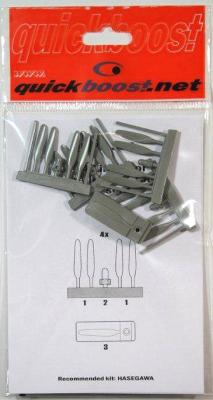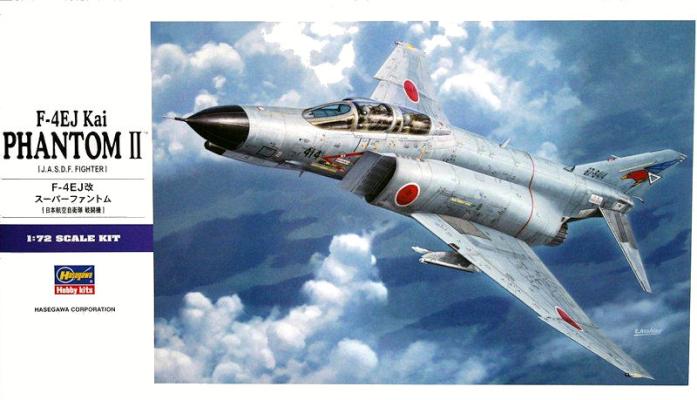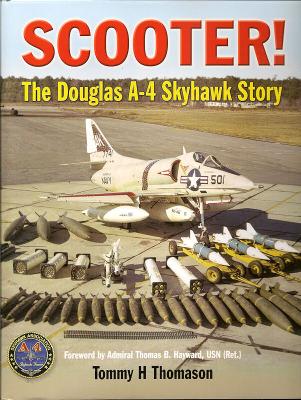Steve Collins
Reviews By Author

|
B-24 Liberator Propellers with Tool for HasegawaPublished:
Once again, Quickboost offers us an upgraded set of propellers for a current kit, the Hasegawa B-24 in 1/72 scale. The bag includes four sets of propeller blades and spinner and an alignment tool for assembling the props. Each set of blades and spinner includes four blades, but, of course, you only need three. If you’re like me, you’ll probably appreciate the extra parts (they don’t call me "Ol' Ten Thumbs" for nothing). As you can see from the attached photos, the hubs provide just that little bit of extra detail over the kit parts. The tool guarantees the blades will be set at the correct angle when you assemble them to the hub. I guess my AMS got the better of me, but I decided I wanted to find out just how far up the shaft the props should be cut from the pour block.… more |

|
F-4EJ Kai Phantom IIPublished:
John Noack was kind enough to let me do this as an in-the-box review, since it’s a rerelease of a version of the Hasegawa F-4 that’s been around for a while. It’s still among the best F-4 kits on the market. With the differences in the available kits narrowing over the last several years, it comes down to personal choice. Personally, I like the Hasegawa F-4s just fine, though I have more than a few examples of almost everybody else’s in my collection, too. To the kit… The F-4EJ is just an F-4E that was built in Japan for use by the Japanese Air Self Defense Force. The F-4EJ Kai is an upgrade of existing aircraft to give them modernized equipment and to extend their service lives into the 21st century. The visible differences are twin Radar Warning Receiver (RWR) antennas on the… more |

|
Scooter! The Douglas A-4 Skyhawk StoryPublished:
It’s hard to think of an aircraft that has had a longer career than the Douglas A-4 Skyhawk, frequently called the Scooter. That career started in 1954 (a very good year, by the way) and continues to this very day. The design was the result of Ed Heinemann’s efforts to give the Navy the attack aircraft it wanted while making it fit on any aircraft carrier the Navy used. The maximum unfolded wingspan the Navy stipulated for carrier aircraft, 27’ 6”, determined the span of the A-4. The ability to carry the then-current Mk. 7 nuclear weapon resulted in the stalky landing gear with which we’re all familiar. The product of Heinemann’s genius was a reliable aircraft that could carry a useful weight of weapons a considerable distance while being tough enough and maneuverable enough to bring… more |
